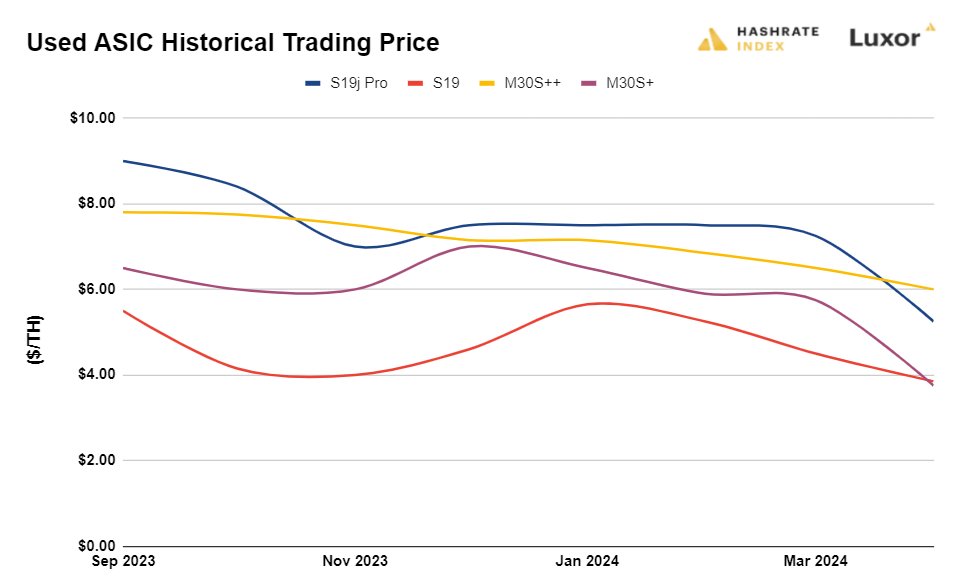According to current metrics, older bitcoin mining rigs are not generating the same revenue as they did before the halving, particularly with the hashprice at approximately $0.056 per terahash per second (TH/s) per day. On April 25, Luxor Technologies reported a significant decline in the prices of application-specific integrated circuit (ASIC) bitcoin mining rigs, highlighting that two specific models experienced price reductions ranging from 28% to 35%.
The Evolution of Bitcoin Mining: How New Tech is Outpacing Old
Over the past week, Bitcoin.com News has reported the hashprice, essentially the projected earnings from 1 terahash per second (TH/s) or 1 petahash per second (PH/s) per day. Simply put, the hashprice represents the daily earnings an ASIC mining rig might anticipate for each terahash of computing power they deploy on the Bitcoin network.
It acts as a daily earnings rate for the computational efforts of these devices. At current hashprice values, data indicates that a total of eight proof-of-work (PoW) crypto assets currently yield higher mining profits than those using the SHA256 consensus algorithm. The list includes algorithms like Kheavyhash, Blake3, Scrypt, Eaglesong, Ethash, Randomx, Cuckatoo32, and Blake2B-Sia.
The leading models in today’s market feature recently launched bitcoin (BTC) mining rigs such as Bitmain’s S21, S21 Pro air-cooled units, and the S21 hydro unit. Moreover, Microbt’s M63S, M66S, and M60S models rank among the top five bitcoin miners for daily earnings as of April 26, 2024. Specifications reveal that Auradine’s AT2880 air-cooled and the AI3680 – immersion single-phase units also remain profitable with the current hashprice value.
These, along with Bitmain’s T21 and Microbt’s M60, manage to secure a substantial profit at an electricity cost of $0.12 per kilowatt-hour (kWh). Profitability calculators show that a much older model, like the Antminer S9 with 14 TH/s and an electricity cost of $0.04 per kWh, would operate at a loss, with daily deficits reaching $2.53. Certainly, publicly listed mining companies and large self-hosted and hosted fleets benefit from more recent machines and reduced operational expenditures (OPEX).

In contrast to the aforementioned newer ASICs produced by Bitmain and Microbt, older models are currently available at discounted prices, as noted by Luxor Technologies. Luxor Technologies specifically pointed out that since September 2023, the prices for Bitmain Antminer S19j Pro models and Microbt M30S+ have decreased by 28% and 35%, respectively. As the bitcoin mining landscape evolves, the shift in profitability will continue to favor newer ASIC models over their predecessors.
With advanced technology offering improved efficiency and higher hashrate, these units have become critical in maintaining competitive earnings. While some previously anticipated a significant decline in exahash per second (EH/s) from the network, the latest data collected at 7:10 p.m. EDT by hashrateindex.com shows that the hashrate remains exceptionally high at 640 EH/s. The lower hash price, at least for the moment, has not triggered a significant departure of hashrate from the Bitcoin network.
What do you think about the hashprice drop and older mining rigs seeing smaller profits? Share your thoughts and opinions about this subject in the comments section below.
 news.bitcoin.com
news.bitcoin.com